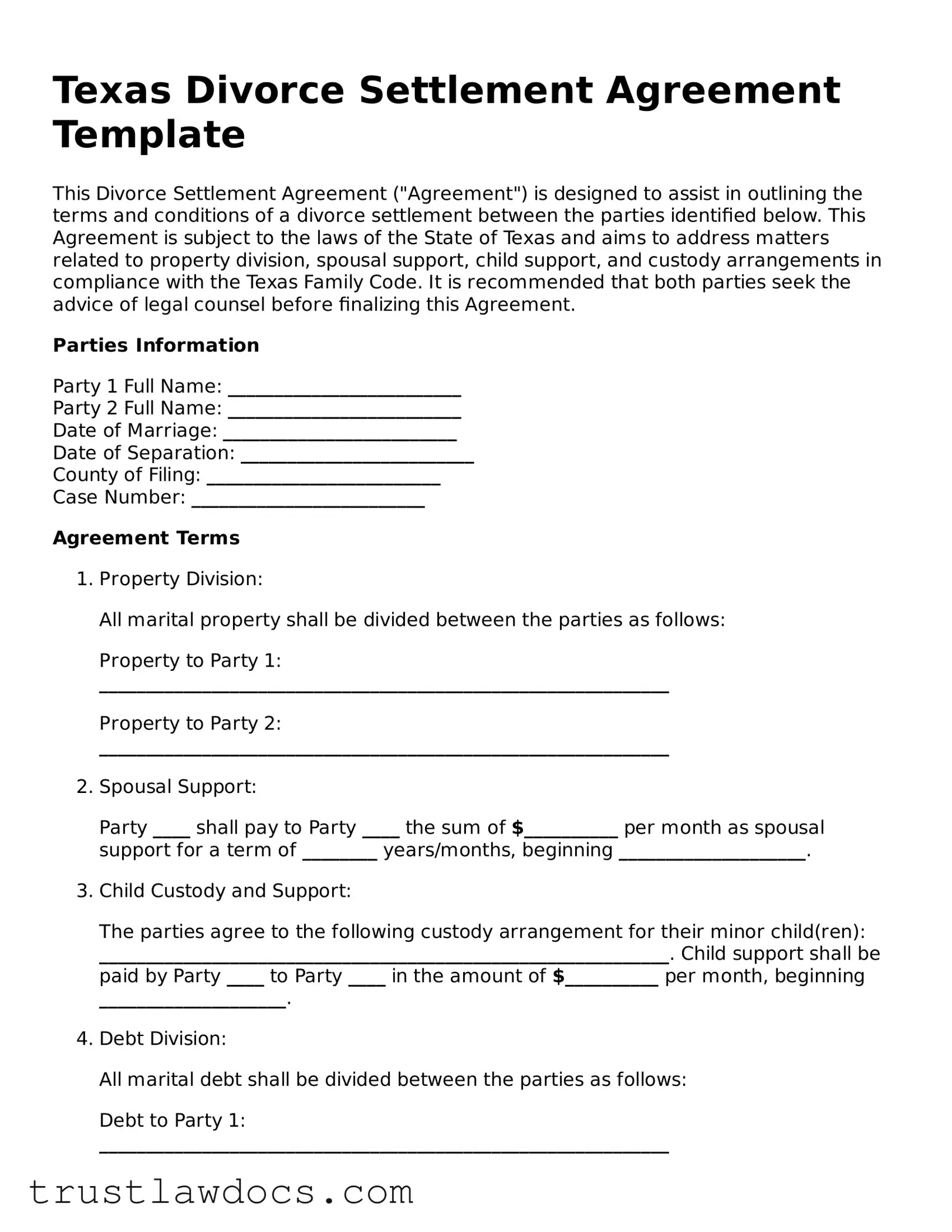Texas Divorce Settlement Agreement Template
This Divorce Settlement Agreement ("Agreement") is designed to assist in outlining the terms and conditions of a divorce settlement between the parties identified below. This Agreement is subject to the laws of the State of Texas and aims to address matters related to property division, spousal support, child support, and custody arrangements in compliance with the Texas Family Code. It is recommended that both parties seek the advice of legal counsel before finalizing this Agreement.
Parties Information
Party 1 Full Name: _________________________
Party 2 Full Name: _________________________
Date of Marriage: _________________________
Date of Separation: _________________________
County of Filing: _________________________
Case Number: _________________________
Agreement Terms
- Property Division:
All marital property shall be divided between the parties as follows:
Property to Party 1:
_____________________________________________________________
Property to Party 2:
_____________________________________________________________
- Spousal Support:
Party ____ shall pay to Party ____ the sum of $__________ per month as spousal support for a term of ________ years/months, beginning ____________________.
- Child Custody and Support:
The parties agree to the following custody arrangement for their minor child(ren):
_____________________________________________________________.
Child support shall be paid by Party ____ to Party ____ in the amount of $__________ per month, beginning ____________________.
- Debt Division:
All marital debt shall be divided between the parties as follows:
Debt to Party 1:
_____________________________________________________________
Debt to Party 2:
_____________________________________________________________
- Other Terms:
Specify any additional terms agreed upon by the parties:
_____________________________________________________________
This Agreement is intended to be a final disposition of the matters addressed herein and may be used as evidence and incorporated into a final decree of divorce.
Party 1 Signature: _________________________ Date: ____________________
Party 2 Signature: _________________________ Date: ____________________
Note: This template is provided for informational purposes only and may need to be adjusted to fit your specific situation or to be compliant with the current laws of the State of Texas. It is not a substitute for professional legal advice.
